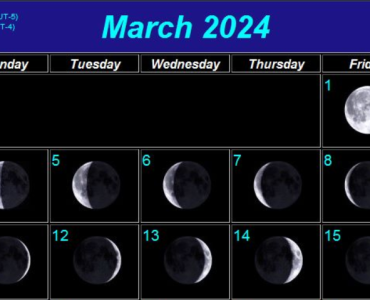Sawm or fasting is abstention from drinking, eating and sexual relationship from twilight to sunset for Allah’s sake. In the old times, horizon was observed with the naked eye and eating would be suspended when light augmented on the horizon. Calendar now replaces these observations, but since calendars are inaccurate, people in Turkey start fasting at least 40 minutes earlier than they should.
Although this duration decreases by approaching the terrestrial equator, it may lengthen upto a few hours at the north pole. A huge entanglement emerges when problems about isha time add on to this.
A – TWILIGHT OCCASIONS
The reason for the mistake in calendars is the inaccurate choice made amongst five different twilight occasions before the sunrise. These are: ‘Fajr al-Kazib’, ‘Astronomical Twilight’, ‘Nautical Twilight’, ‘Fajr as-Sadiq’ and ‘Civil Twilight’.
1- FAJR AL-KAZIB:
Is the illumination that appears vertically, descending downwards in the east, towards the morning. It illuminates brighter at the top, and its bottom does not touch the horizon. It is a short timeline that still allows eating. Since Bilal Habashi made the call to prayer at this time, the Messenger of Allah (s.a.w.) claimed:
“Let either Bilal’s call or the vertically appearing twilight not hinder your suhoor, but the twilight spreading on the horizon.” (Muslim, Siyam: 8 )
2- ASTRONOMICAL TWILIGHT:
Is the twilight that occurs at the higher layers of the atmosphere, which prevents the observation of stars. It begins when the center of sun moves to within 18° of the horizon in the morning and ends when the sun falls more than 18° below the horizon in the evening. This is the definition by astronomers. By the time, the horizon is dark and the closest sunrays are almost 400 km above the Earth’s surface.

Astronomical Twilight in Arabian Desert. No illumination on the horizon.
3- NAUTICAL TWILIGHT:
Is the time when the sun is 12° below the horizon. Under good atmospheric conditions, general outlines of ground objects may be distinguishable, but the horizon is indistinct. Sailors need to see both the stars and the horizon since they determine their directions studying the stars. In the darkness, stars are visible but the horizon is not. In case the sun moves within 6° of the horizon, the horizon is visible but the stars are not. Therefore, sailors make their observations between the nautical twilight and the civil twilight. Best time for observation is when the sun is 10° below the horizon. It is called ‘observation twilight’ by the sailors.
4- FAJR AS-SADIQ :
Is the time when the augmenting sunrays spread on the eastern horizon, and it provides a clear view. These rays form a white line right over the horizon. The surface between the observer and the horizon is seen as a wide black line. The observer begins fasting when these two lines can be distinguished with the naked eye. According to our observations, by that time the Sun is 10° below the horizon. Allah T’ala wills so:
“Eat and drink, until the white streak of fajr appear to you distinct from its black streak.” (Al-Baqarah/ The Cow 2:187)
5- CIVIL TWILIGHT:
Is the time when the sun is 6° below the horizon. By the time, ground objects are clearly visible as well as the brightest stars. This time is called ‘asffar’ (الاسفار) in fiqh.

CIVIL TWILIGHT
The boat and the sea are clearly visible
The moment of sunrise is the moment when the sun shows the edge of its circle on the horizon.
B- CALENDAR STUDIES
In the old times, fasting would begin reliant on the observations made with the naked eye. Calendars have replaced the naked eye observations nowadays. Gazi Ahmed Muhtar Pasha (1839 –1919) explains the preparation of calendars in accordance with the ‘astronomical twilight’ in these words:
“Our consensus on the fajr time is that it begins when the sun approaches to eastern horizon by 21,5°. However, the actual time of fajr as-sadiq is when the sun is 19° below the horizon. It is only out of prudency that our calculation falls before fajr as-sadiq.”
First, 18° of astronomical twilight is increased to 19°, then 2.5° more added out of prudency, which causes the fasting to begin in the middle of the night.
At this time, not even fajr al-kazib is actually due. Therefore, rays from zodiacs are called as ‘fajr al-kazib’. Since zodiac rays are also visible in the evening, the term ‘dawn al-kazib’ is made up to complete the scenario.
The Presidency of Religious Affairs of the Republic of Turkey abolished the prudence time in 1983, reducing the fasting start time to 18°. Upon objections, new observations were made with us taking part. It is established each and every time that astronomical twilight cannot be taken as fajr as-sadiq, but the conclusion of these observations never took its place on calendars.
Insisting on the mistake has not only turned the fasting start and isha salat times into oppressive medium, but also caused Islam to lose prestige due to the great complexity of problem at closer locations to the poles.
Astronomical twilight is the business of astronomers, nautical twilight is the business of sailors. Fajr as-sadiq is irrelevant. Its definiton, origins and consequences are different. This huge mistake should be reverted. This oppression on Muslims and Islam should be stopped!
Effort comes from believers, success, from Allah.
Prof. Abdulaziz BAYINDIR
Istanbul University Faculty of Theology
Süleymaniye Foundation Centre of Research on Religion and Nature









Add comment